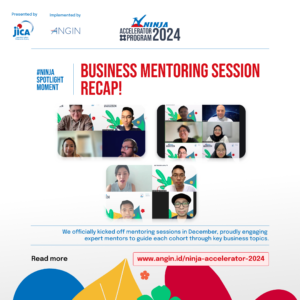[et_pb_section admin_label=”section” transparent_background=”off” allow_player_pause=”off” inner_shadow=”off” parallax=”off” parallax_method=”off” padding_mobile=”off” make_fullwidth=”off” use_custom_width=”off” width_unit=”on” make_equal=”off” use_custom_gutter=”off”][et_pb_row admin_label=”Row”][et_pb_column type=”4_4″][et_pb_post_title admin_label=”Post Title” title=”on” meta=”off” author=”on” date=”on” categories=”on” comments=”on” featured_image=”off” featured_placement=”below” parallax_effect=”on” parallax_method=”on” text_orientation=”left” text_color=”dark” text_background=”off” text_bg_color=”rgba(255,255,255,0.9)” module_bg_color=”rgba(255,255,255,0)” title_all_caps=”off” use_border_color=”off” border_color=”#ffffff” border_style=”solid”] [/et_pb_post_title][/et_pb_column][/et_pb_row][et_pb_row admin_label=”row”][et_pb_column type=”4_4″][et_pb_image admin_label=”Image” show_in_lightbox=”off” url_new_window=”off” use_overlay=”off” animation=”left” sticky=”off” align=”left” force_fullwidth=”off” always_center_on_mobile=”on” use_border_color=”on” border_color=”#f2f2f2″ border_style=”solid” max_width=”1200px” src=”//angin.id/wp-content/uploads/2016/08/Questions-to-Angels.jpg”] [/et_pb_image][et_pb_text admin_label=”News Content” background_layout=”light” text_orientation=”justified” background_color=”#f9f9f9″ use_border_color=”off” border_color=”#ffffff” border_style=”solid” custom_padding=”20px|20px|20px|20px”]
We stumbled upon a very good article by Tech in Asia recently that summed up how startups should position themselves in the shoes of the potential investors and think like them when it comes to asking for funding. ANGIN personally feels that this will help a lot of startups guys to take a step back first and prepare themselves before contacting any investors (angels or VCs). Please check out this great article to get a better sense on how should startups approach the potential investors in their best ways.
1. Are you asking for funding within my range?
VCs and investors come in different appetite ranges. As you see in the image above, if you are asking for $1m from an angel investor who only invests $25k, he would not be able to afford the amount you are asking for. Likewise, if you approach sovereign wealth funds (they usually invest $20m and above) for funding of $100k, get ready to be scoffed at and ridiculed.
Before reaching out and pitching to an investor, do your due diligence and research. Check their prior investment quantum and see whether your investment size is palatable. When doing your pitch, indicate clearly how much you are asking for.
Remember, as you go for larger quantum of investments, you have to expect your business proposal to be more solid with good facts and results, with many supporting documents on assumptions that you make in your vision and projections. Expect also a longer decision-making process.
2. How do I get my money and returns back?
Many entrepreneurs believe that by promoting an exciting idea, investors will jump into investing. Maybe, if you are some hot and charismatic successful entrepreneur. But for VCs, they are institutional investors who need tangible results.
VCs raise money from a variety of sources like larger pension and hedge funds, high net-worth individuals, family offices, MNC investment arms and so on forth. They have to answer to their LPs on how the money that was invested get returns.
You need to clearly indicate a clear exit strategy or a list of strategies, for example, listing on public markets, trade sale (to who), clear dividend policy, Management Buy-out (MBO), selling of core IP, etc. Without one, VCs would not know how to get their money back.
3. When do I get my money back?
VCs are institutional investors and they have investment funds that have a limited life span, from as short as 5 years to as long as 15 years. It is hard to tell the fund life span as it is usually a closely guarded secret.
If a fund just started, you will know that you have a good runway to grow your company and give returns back to your investors. But if you know the fund has been running for some time, VCs would expect a shorter exit timeline to get their returns. You can always try and ask what the investment runway is to understand how long a VC can invest in your startup before calling for an exit.
4. How much returns can I expect?
A rule of thumb in the fund management world is that VC or PE funds need to have an IRR of 20 percent per annum, though it may vary from fund to fund.
Why so? There is a common 2-20 rule in the industry, which means a 2 percent management fee is taken from the fund and a carried interest of 20 percent.
VCs would want you as an investment to generate a minimum IRR of 20 percent in valuations (depending on your agreed valuation methodology). It is usual that the hurdle rate is of this level for VCs to obtain their carried interest.
So it is essential to show that your growth projections and valuations are above the expected returns of the fund (and you have to prove your projects and assumptions are realistic).
5. Is your startup vertical sexy and within my interest?
Depending on the VC, there could be a strict mandate in investment. Some might be restricted by geography, or by specific verticals like hardware. So alignment of interest is important, as it is likely the fund manager is well-versed in the vertical and understands your product easily and quickly.
Another issue is ensuring that your startup is in a hot vertical where valuations are climbing and growing. VCs use the comparative industry method, where they will use financial ratios to compare the valuations of other companies in the industry.
If you are in a boring vertical which has low market valuation returns, it is unlikely that VCs will be excited to invest. Remember, they are driven to get high returns, so that they can get bigger carried interest.
6. Is your product scaling quickly?
A solid scalable business model is key. Show exactly what is making the company gain traction, and how it can go global or be able to enter 2-3 more markets. At Tri5 Ventures, we have seen companies who are too focused on a very small market like Singapore and are unable to scale to other countries because they have made it too specific to one country.
A solid product has one revenue stream that covers the bulk of its revenue. If your startup has to rely on multiple streams of revenue in the early stages, it means that you are not focused enough, or that your business model is not large enough to generate sufficient revenue.
VCs need a specific vertical which you are in, in order to determine your valuations and your growth projections. Having multiple revenue streams makes it hard to do that.
7. Does your startup have a unique and defensible proposition?
More often than not, we get many similar proposals and ideas from startups. And the question I would pose is, “If today a large tech company with $10m enters your space, how do you defend your market share?”
Having good IP, a strong team to execute your idea, or good retention rates would be useful. If you are just doing a me-too, the business model will look weak and will put off the VC.
8. Is your company capitalisation table toxic?
Tri5 Ventures did a study on over 30 companies that have raised Series A and above, and were surprised to see some startups having over 40 shareholders at a fundraise of $2m. Some had their founders’ shares below 50 percent, which means the founders could possibly be overrun in management control (unless they are holding preference shares which have higher voting rights than others).
VCs would be worried that if founders are unable to push their agenda, they will become unmotivated and the investment gets screwed.
Some companies who approached us for seed level funding showed SAFE agreements or convertible notes which are full-ratchet up to a certain level of funding. This scares off investors at the seed-fund level, as the previous round of investors are basically free-riding on the current round of funding and get the same benefits.
VCs generally do not like such agreements and would prefer this resolved beforehand.
9. Do I trust you with my money?
VCs give a certain level of control to the entrepreneur when investing in a startup. So it boils down to two issues:
a. The CEO and founding team. Can the CEO really rally his people and resources to execute what he needs to achieve? Are the founding team members behind the CEO? Is the CEO that inspiring and trustworthy? Or is this all just bullshit?
b. Is the action plan clear and realistic?
Some VCs are known to spend time to know the entrepreneurs and observe the entrepreneur’s actions. This is to assess the character of the entrepreneur before making a decision to invest. It is a relationship that needs to be nurtured, and a certain level of trust has to be established before going ahead with the investment.
10. Who else do you have investing?
I call it the kia-see (afraid to die) syndrome. In reality, not all VCs have sufficient experience to know and understand every vertical in depth. They worry if they invest alone, they will lack the experience to help guide the startup to the next round of funding or to an exit. More likely than not, VCs tend to band together and invest, as lending each other’s name, networks and resources will likely build a more successful startup.
VCs also want to see if the entrepreneur is able to convince others to fund them so that it substantiates their decision to invest in the startup. So it is often necessary to go to a number of potential investors and even if investors say no, seek feedback, improve on your pitch and strengthen your case for investment.
Credits to Tech in Asia
Click here to check out the original article
[/et_pb_text][/et_pb_column][/et_pb_row][/et_pb_section]




